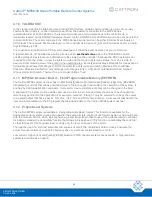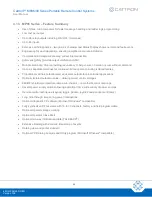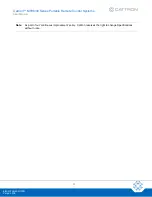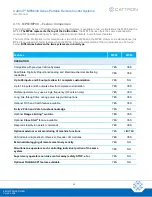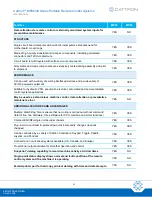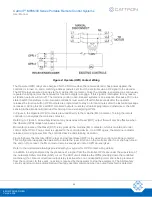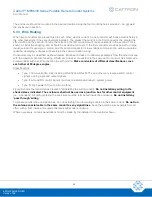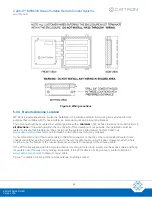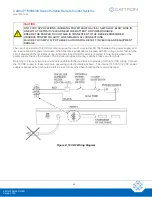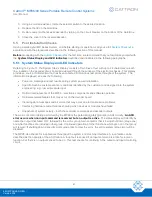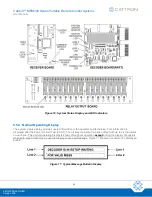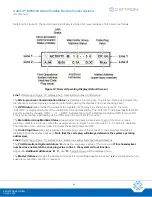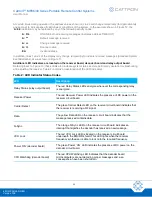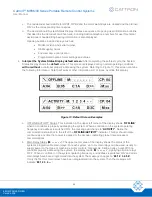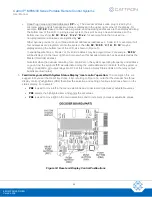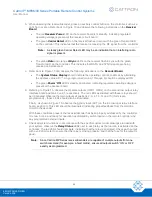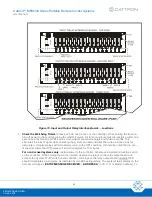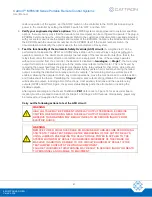
Cattron™ MP96/48 Series Portable Remote Control Systems
User Manual
42
68C-MP96/48-RD-EN
Version 006
The enclosure should be mounted in the desired location using the four mounting holes provided
– do not weld
the enclosure in position.
5.3.3 Wire Routing
When two conductors are placed close to each other, electric current in one conductor will induce electric fields in
the other (especially if they are physically parallel). The greater the current in the first conductor, the greater the
effect will be on the second. Varying the current in the first conductor will cause variations in the second. This is
known as inductive coupling, and it should be avoided at all costs. If the first conductor provides power to a large
inductive load (for example, a motor), and the second conductor is low-voltage communication wiring, unwanted
(possibly damaging) voltages will develop in the communication wiring.
Conductors may be classified as shown below. Route each class of conductors separately from the other classes,
with the maximum practical spacing. Shield each class of conductors in their own duct or conduit. Use metal wire
ducts/conduits with a solid connection to earth ground.
Make conductors of different classifications cross
each other at 90 degree angles.
Classifications:
•
Type I: Communication lines including RS-232 and RS-485 TTL and other very low power DC control
signals; analog input and output signals
•
Type II: AC and DC control signals (such as to starters and relays); system power
•
Type III: High power AC (such as to motors)
Figure 6 shows the recommended location for installing the wiring conduit
.
Do not install any wiring in the
shaded areas indicated. The enclosure shall not be used as a junction box for other control equipment
,
(i.e., a pendant). All wiring entering the enclosure must be terminated inside the enclosure.
Do not install any
‘pass through’ wiring
.
To prevent interference on signal lines, do not install high and low voltage cables in the same conduit.
Do not run
the antenna coaxial cable in the same conduit as any signal lines
. Keep the antenna wire separate from all
other wiring, both inside and outside the receiver/decoder enclosure.
Where necessary, conduit penetrations must be made by the installer in the locations shown.

